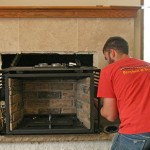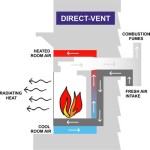Gas Fireplace Replacement Screens: A Comprehensive Guide
Gas fireplaces offer a convenient and aesthetically pleasing alternative to traditional wood-burning fireplaces. A crucial component of a gas fireplace is the screen, providing both safety and visual appeal. Over time, however, fireplace screens can become damaged, worn, or simply outdated. Replacing a gas fireplace screen is a relatively straightforward process that can significantly enhance the appearance and functionality of the appliance. This article provides a comprehensive guide to understanding, selecting, and installing gas fireplace replacement screens.
Understanding the Purpose of a Gas Fireplace Screen
The primary function of a gas fireplace screen is safety. It serves as a barrier to prevent sparks, embers, or debris from escaping the fireplace chamber and potentially causing damage or injury. Gas fireplaces, while generally safer than wood-burning alternatives, can still produce small amounts of debris, particularly during startup and shutdown. The screen effectively contains these particles. Furthermore, the screen prevents accidental contact with the hot glass or burner components, particularly important in households with children or pets. Beyond safety, the screen also contributes to the aesthetic appeal of the fireplace, offering a design element that complements the overall style of the room.
Different types of screens offer varying levels of protection and visual appeal. Mesh screens, for example, provide excellent spark protection due to their fine weave. Glass screens, on the other hand, offer a more modern and unobstructed view of the flames while still providing a significant heat barrier. Decorative screens, often crafted from wrought iron or other metals, can add a touch of elegance and sophistication to the fireplace.
The screen also plays a role in regulating airflow around the fireplace. A properly designed screen will allow for adequate ventilation, ensuring efficient combustion and preventing the buildup of dangerous gases such as carbon monoxide. Obstructed or damaged screens can impede airflow, leading to inefficient operation and potential safety hazards. Therefore, regular inspection and maintenance of the screen are crucial to ensure the safe and efficient operation of the gas fireplace.
Factors to Consider When Selecting a Replacement Screen
Choosing the right replacement screen involves considering several key factors, including the size and shape of the fireplace opening, the desired aesthetic, the level of protection required, and the specific requirements of the gas fireplace unit. Failure to consider these factors can result in a screen that is either incompatible with the fireplace or ineffective in providing the necessary safety and aesthetic benefits.
Firstly, accurate measurements of the fireplace opening are paramount. The replacement screen must fit snugly within the opening, ensuring that there are no gaps through which sparks or debris can escape. Measure the width, height, and depth of the opening carefully, and consult the fireplace manufacturer's specifications to determine the appropriate screen size. Some fireplaces have standard sizes, while others may require custom-made screens.
Secondly, the aesthetic of the screen should complement the overall design of the room and the fireplace itself. Consider the existing décor, the style of the fireplace surround, and the desired level of visibility of the flames. Options range from simple, utilitarian mesh screens to ornate, decorative wrought iron screens. Glass screens offer a modern and unobstructed view, while bi-fold screens provide versatility in terms of opening and closing the fireplace.
Thirdly, the level of protection offered by the screen is a critical consideration, particularly for households with children or pets. Mesh screens with a fine weave provide the best spark protection, while glass screens offer a significant heat barrier. Consider the potential risks and choose a screen that provides adequate protection for the specific needs of the household. Always prioritize safety over aesthetics when selecting a replacement screen.
Finally, it's crucial to consult the gas fireplace manufacturer's specifications to ensure compatibility. Some fireplaces have specific requirements for screen materials, sizes, or mounting mechanisms. Using an incompatible screen can void the warranty or, more seriously, compromise the safety and efficiency of the fireplace. Check the owner's manual or contact the manufacturer directly to obtain the necessary information.
Types of Gas Fireplace Screens
The market offers a variety of gas fireplace screens, each with unique characteristics and benefits. Understanding the different types allows for informed decision-making when selecting a replacement screen. The most common types include mesh screens, glass screens, decorative screens, and bi-fold screens.
Mesh screens are the most common and affordable type. They are typically constructed from woven metal wires, creating a fine mesh that effectively blocks sparks and embers. Mesh screens are durable, easy to clean, and provide excellent spark protection. They are often available in a variety of finishes to match different fireplace styles. However, mesh screens can partially obstruct the view of the flames, which may be a drawback for some users.
Glass screens offer a more modern and unobstructed view of the flames. They are typically made from tempered glass, which is heat-resistant and durable. Glass screens provide a significant heat barrier, preventing accidental contact with the hot glass or burner components. They are easy to clean and maintain, and they enhance the aesthetic appeal of the fireplace. However, glass screens can be more expensive than mesh screens, and they may not provide as much spark protection.
Decorative screens are designed to add a touch of elegance and sophistication to the fireplace. They are often crafted from wrought iron or other metals and feature intricate designs and patterns. Decorative screens can significantly enhance the aesthetic appeal of the room, but they may not provide as much spark protection as mesh screens. They are typically more expensive than mesh screens and require more maintenance.
Bi-fold screens consist of two or more hinged panels that can be folded open or closed. They offer versatility in terms of opening and closing the fireplace, allowing for easy access to the burner components for cleaning or maintenance. Bi-fold screens are available in a variety of materials and styles, including mesh, glass, and decorative options. They can be more expensive than single-panel screens, but they offer added convenience and flexibility.
Considerations when choosing a screen type also include the ease of installation, cleaning requirements, and overall durability. Each type has its own advantages and disadvantages, and the best choice will depend on the specific needs and preferences of the individual user.
Step-by-Step Guide to Replacing a Gas Fireplace Screen
Replacing a gas fireplace screen is a relatively straightforward process that can be accomplished with basic tools and a careful approach. However, safety is paramount. It is essential to turn off the gas supply to the fireplace and allow it to cool completely before beginning the replacement process. Furthermore, consulting the fireplace manufacturer's instructions is crucial to ensure proper installation and avoid any potential hazards.
Step 1: Preparation and Safety: Before starting, turn off the gas supply to the fireplace at the shut-off valve. This is typically located near the fireplace or in the basement. Allow the fireplace to cool completely, ensuring that the glass or metal surfaces are not hot to the touch. Gather the necessary tools, including a screwdriver, measuring tape, safety glasses, and work gloves. Protect the surrounding area with a drop cloth to prevent scratches or damage.
Step 2: Removing the Old Screen: Carefully inspect the existing screen to determine how it is attached to the fireplace. Some screens are held in place by clips, screws, or magnets. Others may simply slide into a groove or frame. Remove the fasteners or gently slide the screen out of its position. If the screen is stuck or difficult to remove, consult the fireplace manufacturer's instructions for specific guidance. Dispose of the old screen properly, following local regulations for metal or glass recycling.
Step 3: Measuring and Fitting the New Screen: Before installing the new screen, double-check the measurements to ensure a proper fit. Compare the dimensions of the new screen to the fireplace opening, ensuring that there are no gaps or overlaps. If necessary, make minor adjustments to the screen or the fireplace frame to achieve a snug fit. Test-fit the screen to ensure that it slides in and out smoothly.
Step 4: Installing the New Screen: Carefully position the new screen in the fireplace opening, aligning it with the mounting points or grooves. Secure the screen using the appropriate fasteners, such as clips, screws, or magnets. Tighten the fasteners until the screen is securely in place, but avoid over-tightening, which could damage the screen or the fireplace frame. If the screen slides into a groove or frame, ensure that it is properly seated and does not wobble.
Step 5: Final Inspection and Testing: After installing the new screen, perform a final inspection to ensure that it is properly secured and that there are no gaps or loose connections. Turn the gas supply back on and test the fireplace to ensure that it operates safely and efficiently. Observe the flames to ensure that they are burning properly and that there are no unusual noises or odors. If you notice any problems, turn off the gas supply immediately and consult a qualified gas fireplace technician.
Following these steps will ensure a safe and effective replacement of the gas fireplace screen, enhancing both the safety and aesthetic appeal of the appliance.
Maintaining a Gas Fireplace Screen
Regular maintenance is essential to prolong the life of a gas fireplace screen and ensure its continued functionality. Proper cleaning and care will prevent the buildup of soot, dust, and other debris, which can detract from its appearance and impede airflow. Furthermore, periodic inspections will identify any signs of damage or wear, allowing for timely repairs or replacements.
Cleaning a gas fireplace screen is a relatively simple process. Before cleaning, ensure the fireplace is completely cool and the gas supply is turned off. For mesh screens, use a soft brush or vacuum cleaner with a brush attachment to remove loose dust and debris. For stubborn stains, a mild detergent and water solution can be used. Avoid harsh chemicals or abrasive cleaners, which can damage the screen's finish. Glass screens can be cleaned with a glass cleaner and a soft cloth. Always follow the manufacturer's instructions for cleaning specific types of screens.
Regular inspections should be conducted at least once a year, or more frequently if the fireplace is used heavily. Look for signs of damage, such as cracks, dents, rust, or loose connections. Pay particular attention to the mounting points and fasteners, ensuring that they are secure and in good condition. If any damage is detected, repair or replace the screen promptly to prevent further deterioration and ensure continued safety.
The surrounding area of the fireplace should also be kept clean and free of combustible materials. Remove any flammable items, such as paper, fabrics, or decorations, from the vicinity of the fireplace. Keep the area around the fireplace well-ventilated to prevent the buildup of dangerous gases. Regular maintenance not only extends the life of the screen but also contributes to the overall safety and efficiency of the gas fireplace.

Valor G3 5 Replacement Screen 4003381 Friendly Fires

The Best Fireplace Screens For Your Chimney Vertical Care

Standard Size Masonry Fireplace Doors Fixed Frame

Fireplace Glass Doors Vs Screens Full Service Chimney

51 Decorative Fireplace Screens To Instantly Update Your

Montigo Safety Screen H38df Hl38df Hw38df H38dfst Rsch38

Why You Should Have A Fireplace Screen In Your Home

Fireplace Glass Doors Vs Screens Full Service Chimney

Gas Fireplaces To Get Screens Prevent Burns

Request A Safety Screen For Gas Fireplace Heat Glo
Related Posts








